[English] 日本語
 Yorodumi
Yorodumi- PDB-5hf1: The third PDZ domain from the synaptic protein PSD-95 (G330T muta... -
+ Open data
Open data
- Basic information
Basic information
| Entry | Database: PDB / ID: 5hf1 | ||||||
|---|---|---|---|---|---|---|---|
| Title | The third PDZ domain from the synaptic protein PSD-95 (G330T mutant) in complex with a mutant C-terminal peptide derived from CRIPT (T-2F) | ||||||
 Components Components |
| ||||||
 Keywords Keywords | PEPTIDE BINDING PROTEIN / PDZ / GLGF / DHR / adhesion / synapse / synaptic density / peptide-binding domain | ||||||
| Function / homology |  Function and homology information Function and homology informationRHO GTPases activate CIT / regulation of postsynaptic density protein 95 clustering / positive regulation of AMPA glutamate receptor clustering / neuronal ion channel clustering / P2Y1 nucleotide receptor binding / beta-1 adrenergic receptor binding / Neurexins and neuroligins / neuroligin family protein binding / regulation of grooming behavior / structural constituent of postsynaptic density ...RHO GTPases activate CIT / regulation of postsynaptic density protein 95 clustering / positive regulation of AMPA glutamate receptor clustering / neuronal ion channel clustering / P2Y1 nucleotide receptor binding / beta-1 adrenergic receptor binding / Neurexins and neuroligins / neuroligin family protein binding / regulation of grooming behavior / structural constituent of postsynaptic density / protein localization to microtubule / synaptic vesicle maturation / positive regulation of neuron projection arborization / receptor localization to synapse / vocalization behavior / neuron spine / cerebellar mossy fiber / regulation of postsynaptic density assembly / AMPA glutamate receptor clustering / protein localization to synapse / positive regulation of dendrite morphogenesis / proximal dendrite / dendritic branch / Trafficking of AMPA receptors / LGI-ADAM interactions / Activation of Ca-permeable Kainate Receptor / dendritic spine morphogenesis / negative regulation of receptor internalization / juxtaparanode region of axon / frizzled binding / acetylcholine receptor binding / neuron projection terminus / regulation of NMDA receptor activity / dendritic spine organization / cellular response to potassium ion / RAF/MAP kinase cascade / positive regulation of synapse assembly / beta-2 adrenergic receptor binding / NMDA selective glutamate receptor signaling pathway / Synaptic adhesion-like molecules / neuromuscular process controlling balance / neurotransmitter receptor localization to postsynaptic specialization membrane / cortical cytoskeleton / locomotory exploration behavior / AMPA glutamate receptor complex / excitatory synapse / kinesin binding / social behavior / regulation of neuronal synaptic plasticity / glutamate receptor binding / positive regulation of excitatory postsynaptic potential / Unblocking of NMDA receptors, glutamate binding and activation / D1 dopamine receptor binding / positive regulation of synaptic transmission / postsynaptic density, intracellular component / regulation of postsynaptic membrane neurotransmitter receptor levels / cytoplasmic microtubule organization / ionotropic glutamate receptor binding / dendrite cytoplasm / RNA splicing / synaptic membrane / dendritic shaft / cell periphery / PDZ domain binding / spliceosomal complex / neuromuscular junction / establishment of protein localization / regulation of long-term neuronal synaptic plasticity / cell-cell adhesion / postsynaptic density membrane / cerebral cortex development / kinase binding / mRNA processing / synaptic vesicle / cell-cell junction / cell junction / nervous system development / positive regulation of cytosolic calcium ion concentration / protein-containing complex assembly / scaffold protein binding / protein phosphatase binding / microtubule binding / chemical synaptic transmission / dendritic spine / postsynaptic membrane / postsynapse / neuron projection / postsynaptic density / signaling receptor binding / neuronal cell body / dendrite / synapse / protein kinase binding / protein-containing complex binding / glutamatergic synapse / endoplasmic reticulum / membrane / plasma membrane / cytoplasm / cytosol Similarity search - Function | ||||||
| Biological species |  | ||||||
| Method |  X-RAY DIFFRACTION / X-RAY DIFFRACTION /  SYNCHROTRON / SYNCHROTRON /  MOLECULAR REPLACEMENT / Resolution: 1.747 Å MOLECULAR REPLACEMENT / Resolution: 1.747 Å | ||||||
 Authors Authors | White, K.I. / Raman, A.S. / Ranganathan, R. | ||||||
| Funding support |  United States, 1items United States, 1items
| ||||||
 Citation Citation |  Journal: Cell(Cambridge,Mass.) / Year: 2016 Journal: Cell(Cambridge,Mass.) / Year: 2016Title: Origins of Allostery and Evolvability in Proteins: A Case Study. Authors: Raman, A.S. / White, K.I. / Ranganathan, R. | ||||||
| History |
|
- Structure visualization
Structure visualization
| Structure viewer | Molecule:  Molmil Molmil Jmol/JSmol Jmol/JSmol |
|---|
- Downloads & links
Downloads & links
- Download
Download
| PDBx/mmCIF format |  5hf1.cif.gz 5hf1.cif.gz | 92.2 KB | Display |  PDBx/mmCIF format PDBx/mmCIF format |
|---|---|---|---|---|
| PDB format |  pdb5hf1.ent.gz pdb5hf1.ent.gz | 73.7 KB | Display |  PDB format PDB format |
| PDBx/mmJSON format |  5hf1.json.gz 5hf1.json.gz | Tree view |  PDBx/mmJSON format PDBx/mmJSON format | |
| Others |  Other downloads Other downloads |
-Validation report
| Summary document |  5hf1_validation.pdf.gz 5hf1_validation.pdf.gz | 436 KB | Display |  wwPDB validaton report wwPDB validaton report |
|---|---|---|---|---|
| Full document |  5hf1_full_validation.pdf.gz 5hf1_full_validation.pdf.gz | 437.8 KB | Display | |
| Data in XML |  5hf1_validation.xml.gz 5hf1_validation.xml.gz | 8.2 KB | Display | |
| Data in CIF |  5hf1_validation.cif.gz 5hf1_validation.cif.gz | 10.8 KB | Display | |
| Arichive directory |  https://data.pdbj.org/pub/pdb/validation_reports/hf/5hf1 https://data.pdbj.org/pub/pdb/validation_reports/hf/5hf1 ftp://data.pdbj.org/pub/pdb/validation_reports/hf/5hf1 ftp://data.pdbj.org/pub/pdb/validation_reports/hf/5hf1 | HTTPS FTP |
-Related structure data
| Related structure data |  5hebC  5hedC  5hetC  5heyC  5hfbC  5hfcC  5hffC  1be9S S: Starting model for refinement C: citing same article ( |
|---|---|
| Similar structure data |
- Links
Links
- Assembly
Assembly
| Deposited unit | 
| |||||||||
|---|---|---|---|---|---|---|---|---|---|---|
| 1 |
| |||||||||
| Unit cell |
| |||||||||
| Components on special symmetry positions |
|
- Components
Components
| #1: Protein | Mass: 12782.120 Da / Num. of mol.: 1 / Fragment: PDZ-3 domain (UNP residues 302-402) / Mutation: G330T Source method: isolated from a genetically manipulated source Source: (gene. exp.)   |
|---|---|
| #2: Protein/peptide | Mass: 1116.266 Da / Num. of mol.: 1 / Fragment: PDZ3-binding domain (UNP residues 93-101) / Mutation: T99F / Source method: obtained synthetically Details: Synthesized using standard FMOC chemistry, HPCL purified, and lyophilized. Source: (synth.)  |
| #3: Water | ChemComp-HOH / |
-Experimental details
-Experiment
| Experiment | Method:  X-RAY DIFFRACTION / Number of used crystals: 1 X-RAY DIFFRACTION / Number of used crystals: 1 |
|---|
- Sample preparation
Sample preparation
| Crystal | Density Matthews: 2.17 Å3/Da / Density % sol: 43.5 % |
|---|---|
| Crystal grow | Temperature: 289 K / Method: vapor diffusion, hanging drop / pH: 6.8 Details: Peptide was included in protein buffer to a final molar ratio of 2:1 relative to protein. Reservoir solution contained 1.2 M sodium citrate, pH 6.8. Equal amounts (1.5 microliters) of ...Details: Peptide was included in protein buffer to a final molar ratio of 2:1 relative to protein. Reservoir solution contained 1.2 M sodium citrate, pH 6.8. Equal amounts (1.5 microliters) of protein (9 mg/mL) and reservoir solution were mixed and equillibrated against 500 microliters of crystallization buffer. |
-Data collection
| Diffraction | Mean temperature: 100 K |
|---|---|
| Diffraction source | Source:  SYNCHROTRON / Site: SYNCHROTRON / Site:  APS APS  / Beamline: 19-ID / Wavelength: 0.9791833 Å / Beamline: 19-ID / Wavelength: 0.9791833 Å |
| Detector | Type: ADSC QUANTUM 315r / Detector: CCD / Date: Dec 15, 2012 |
| Radiation | Protocol: SINGLE WAVELENGTH / Monochromatic (M) / Laue (L): M / Scattering type: x-ray |
| Radiation wavelength | Wavelength: 0.9791833 Å / Relative weight: 1 |
| Reflection | Resolution: 1.747→40.126 Å / Num. obs: 13010 / % possible obs: 99.48 % / Redundancy: 27.3 % / Rmerge(I) obs: 0.055 / Net I/σ(I): 67.804 |
| Reflection shell | Resolution: 1.7469→1.8169 Å / Redundancy: 26.3 % / Mean I/σ(I) obs: 1.844 |
- Processing
Processing
| Software |
| ||||||||||||||||||||||||||||||||||||||||||||||||||||||||||||||||||||||||||||||||||||||||||||||||||||||||||||||||||||||||||||||||||||||||||||||||||||||
|---|---|---|---|---|---|---|---|---|---|---|---|---|---|---|---|---|---|---|---|---|---|---|---|---|---|---|---|---|---|---|---|---|---|---|---|---|---|---|---|---|---|---|---|---|---|---|---|---|---|---|---|---|---|---|---|---|---|---|---|---|---|---|---|---|---|---|---|---|---|---|---|---|---|---|---|---|---|---|---|---|---|---|---|---|---|---|---|---|---|---|---|---|---|---|---|---|---|---|---|---|---|---|---|---|---|---|---|---|---|---|---|---|---|---|---|---|---|---|---|---|---|---|---|---|---|---|---|---|---|---|---|---|---|---|---|---|---|---|---|---|---|---|---|---|---|---|---|---|---|---|---|
| Refinement | Method to determine structure:  MOLECULAR REPLACEMENT MOLECULAR REPLACEMENTStarting model: 1BE9 Resolution: 1.747→40.126 Å / SU ML: 0.19 / Cross valid method: FREE R-VALUE / σ(F): 1.48 / Phase error: 21.4 / Stereochemistry target values: ML
| ||||||||||||||||||||||||||||||||||||||||||||||||||||||||||||||||||||||||||||||||||||||||||||||||||||||||||||||||||||||||||||||||||||||||||||||||||||||
| Solvent computation | Shrinkage radii: 0.9 Å / VDW probe radii: 1.11 Å / Solvent model: FLAT BULK SOLVENT MODEL | ||||||||||||||||||||||||||||||||||||||||||||||||||||||||||||||||||||||||||||||||||||||||||||||||||||||||||||||||||||||||||||||||||||||||||||||||||||||
| Refinement step | Cycle: LAST / Resolution: 1.747→40.126 Å
| ||||||||||||||||||||||||||||||||||||||||||||||||||||||||||||||||||||||||||||||||||||||||||||||||||||||||||||||||||||||||||||||||||||||||||||||||||||||
| Refine LS restraints |
| ||||||||||||||||||||||||||||||||||||||||||||||||||||||||||||||||||||||||||||||||||||||||||||||||||||||||||||||||||||||||||||||||||||||||||||||||||||||
| LS refinement shell |
| ||||||||||||||||||||||||||||||||||||||||||||||||||||||||||||||||||||||||||||||||||||||||||||||||||||||||||||||||||||||||||||||||||||||||||||||||||||||
| Refinement TLS params. | Method: refined / Refine-ID: X-RAY DIFFRACTION
| ||||||||||||||||||||||||||||||||||||||||||||||||||||||||||||||||||||||||||||||||||||||||||||||||||||||||||||||||||||||||||||||||||||||||||||||||||||||
| Refinement TLS group |
|
 Movie
Movie Controller
Controller







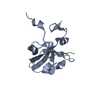
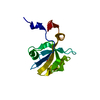
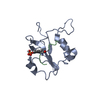
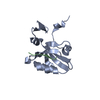

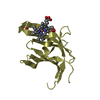
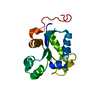
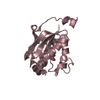

 PDBj
PDBj




